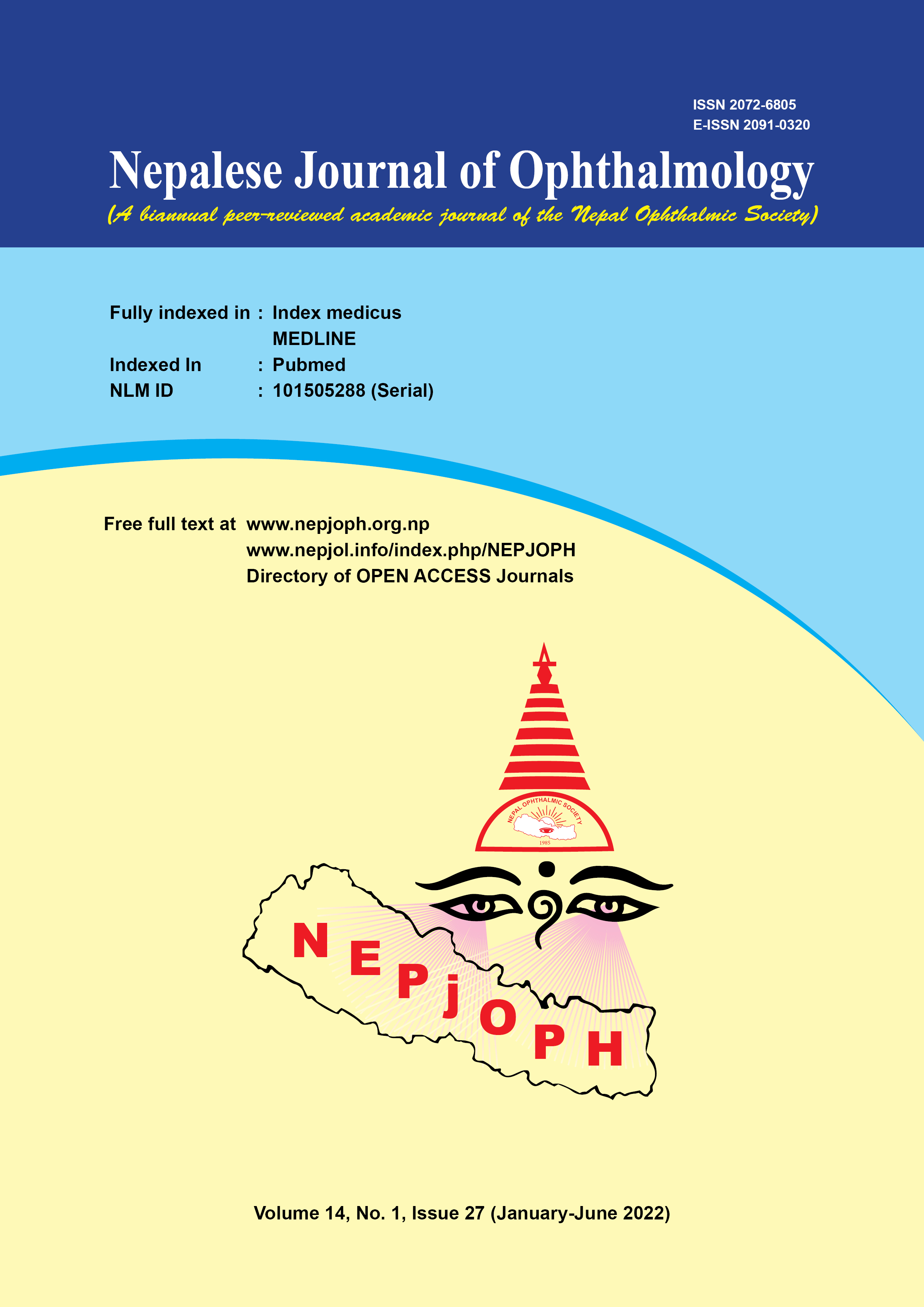Clinico-epidemiological Study of Patients with Glaucoma in a Tertiary Eye Center, Nepal
DOI:
https://doi.org/10.3126/nepjoph.v14i1.34285Keywords:
Glaucoma, Primary angle closure glaucoma, Primary open angle glaucomaAbstract
Introduction: Major cause of irreversible blindness is glaucoma which is increasing as a significant global health problem. Knowledge of glaucoma burden and its clinical characteristics in this region is essential.
Materials and methods: This was a cross-sectional hospital -based study conducted at Glaucoma unit in CHEERS Hospital, Bhaktapur from August 2015 to July 2019. Patients’ demographic profile, along with comprehensive eye examination findings were reviewed from the records. Data analysis was done with IBM SPSS version 24 and was presented in mean (±SD), frequency and proportions and a chi- square test was applied. P value < 0.05 was considered statistically significant.
Results: Total of 310 glaucoma cases were included in this study. The mean age presentation was 61.89±14.4 years, and the majority of patients (52.9%) were in the age group 60-79 years. Most patients had primary open angle glaucoma (171, 55.2%) followed by primary angle closure glaucoma (92, 29.7%).
Conclusion: Primary open angle glaucoma is the most common form of glaucoma. The proportion of glaucoma increased with increasing age (> 40 years). Provision of screening programs targeting persons with risk factors and opportunistic eye examinations would be beneficial in detection of glaucoma.
Downloads
Downloads
Published
How to Cite
Issue
Section
License
Copyright (c) 2022 Nepalese Journal of Ophthalmology

This work is licensed under a Creative Commons Attribution-NonCommercial-NoDerivatives 4.0 International License.
This license enables reusers to copy and distribute the material in any medium or format in unadapted form only, for noncommercial purposes only, and only so long as attribution is given to the creator.




